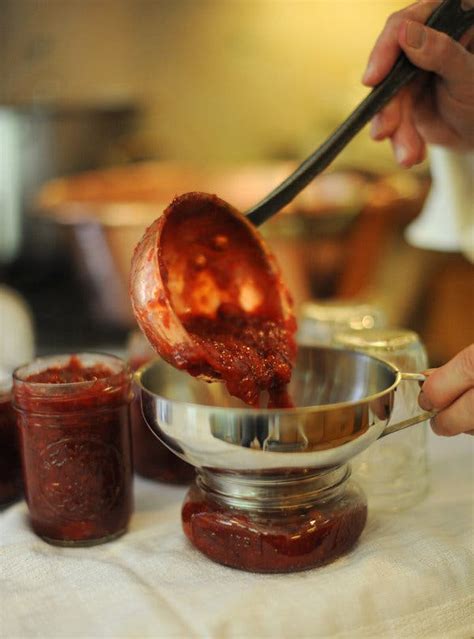The Ultimate Rhubarb Confiture Recipe: A Sweet and Tart Delight
Rhubarb, with its unique tartness, is a spring and summer favorite. While often used in pies and crumbles, its versatility shines through in confiture. This recipe guides you through making a delicious rhubarb confiture, perfect for spreading on toast, accompanying cheese, or as a delightful addition to your baking. We'll cover everything from ingredient selection to achieving the perfect set, ensuring your confiture is a culinary masterpiece.
Ingredients for the Perfect Rhubarb Confiture
This recipe yields approximately 4-5 small jars of rhubarb confiture. Adjust quantities as needed for larger batches.
- 1 kg (2.2 lbs) Rhubarb: Choose firm, vibrant rhubarb stalks. Avoid any that are soft or bruised. Thoroughly wash and trim the ends. Cut into 1-inch pieces.
- 750g (26 oz) Granulated Sugar: The sugar quantity is crucial for setting the confiture. Don't reduce it unless you have a specific reason and understand the impact on setting.
- 100ml (3.4 fl oz) Water: This helps extract the rhubarb's juices and initiates the cooking process.
- Juice of 1 Lemon: This adds acidity, balancing the sweetness and helping the confiture set. You can also add a zest of lemon for enhanced flavor.
- Optional: 1-2 tsp Vanilla Extract: For an extra touch of warmth and sweetness.
- Optional: Pinch of Ground Cinnamon or Ginger: For a spiced twist.
Step-by-Step Guide to Making Rhubarb Confiture
Follow these steps carefully to achieve the perfect consistency and flavor:
1. Preparing the Rhubarb:
Wash and trim the rhubarb stalks. Cut them into roughly 1-inch pieces. Consistency in size helps ensure even cooking.
2. Combining Ingredients:
In a large, heavy-bottomed saucepan, combine the chopped rhubarb, sugar, water, and lemon juice. If using, add the vanilla extract and spices at this stage. Gently stir to combine.
3. Cooking the Confiture:
Bring the mixture to a gentle simmer over medium heat, stirring occasionally to prevent sticking. Once simmering, reduce the heat to low and continue to cook, stirring frequently, for approximately 30-45 minutes. The cooking time depends on the ripeness of your rhubarb and the desired consistency.
4. Checking for Setting Point:
The confiture is ready when it reaches the setting point. There are two ways to check:
- Wrinkle Test: Place a small spoonful of confiture onto a chilled plate. Let it cool for a minute, then push the center with your finger. If the surface wrinkles, it's ready.
- Plate Test: Place a spoonful of confiture onto a chilled plate. Let it cool for a few minutes. Tilt the plate. If the confiture doesn't run, it's set.
5. Jarring the Confiture:
Once the confiture has reached the setting point, carefully ladle it into sterilized jars, leaving a small headspace (about 1cm/½ inch). Wipe the rims of the jars clean, seal tightly, and process in a boiling water bath for 10 minutes to ensure preservation. Alternatively, you can store the confiture in the refrigerator for shorter-term use.
Tips for Success:
- Sterilize your jars: This is crucial for preserving the confiture and preventing mold growth. Wash jars and lids in hot, soapy water, then sterilize by boiling them for 10 minutes.
- Use a heavy-bottomed pan: This prevents scorching and ensures even cooking.
- Don't overcook: Overcooking can result in a tough and less flavorful confiture.
- Experiment with flavors: Add other fruits like strawberries or raspberries for a unique twist.
Storing your Rhubarb Confiture:
Properly stored, your homemade rhubarb confiture can last for several months. Always check for any signs of spoilage before consuming.
This detailed guide ensures your rhubarb confiture is not just delicious, but also safely preserved. Enjoy this sweet and tart treat! Remember to share your creations and tag us! #rhubarbconfiture #homemade #preserving #recipe

